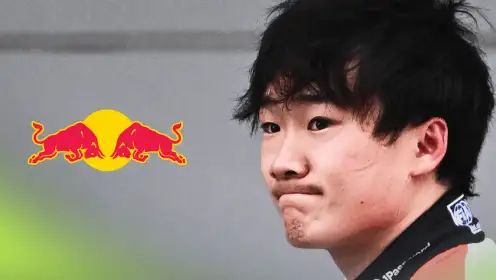How Red Bull risk-taking rescued Max Verstappen’s wild Brazilian GP

Red Bull had to make some wild setup changes over the course of the Brazilian Grand Prix weekend.
Laurent Mekies has explained Red Bull’s setup risk-taking during the Brazilian GP weekend, having had massive swings in performance throughout.
Max Verstappen went from being knocked out in Q1 on Saturday to showing race-winning pace en route to third place overall in the Grand Prix after Red Bull overhauled his car overnight.
Laurent Mekies: Taking risks is how Red Bull goes racing
Red Bull appeared to be up against it right from the get-go at Interlagos, with the Sprint weekend format working against the squad due to the lack of practice time.
With only 60 minutes of practice available before Sprint Qualifying on Friday, the RB21 wasn’t in a comfortable window immediately, and this played out with a uncharacteristically subdued display from Max Verstappen as he qualified in sixth and raced to fourth.
At no point did the four-time F1 World Champion look capable of challenging the trio of cars ahead of him, with his position gains only coming due to clearing Fernando Alonso at the start and benefitting from Oscar Piastri’s crash.
Following this, Red Bull opted to go in a different setup direction once again when parc ferme conditions were lifted ahead of main qualifying, which proved to only take the car further in the wrong direction.
Verstappen was blunt afterward, revealing that nothing had worked, and the car simply had no grip to give him what he needed to even escape the Q1 session.
With nothing to lose from P16, Red Bull opted to break parc ferme regulations overnight with another setup change, and fitted his car with a new Honda power unit to add to his pool.
Required to start from the pitlane due to the changes, the chances of a podium appeared remote. But, not only did the Dutch driver achieve it, but he also finished ahead of one of his title rivals, Piastri, and briefly even looked capable of challenging for the win.
With the setup gamble from Saturday night having paid off, Red Bull boss Laurent Mekies explained afterwards that his insistence on the team taking calculated risks meant there were no regrets over the change of direction ahead of main qualifying.
“Credit to Max for the sensational drive,” he said.
“He won last year here from P16 in the wet, and I think we will probably agree that it was as sensational as last year to bring it to P3 from the pit lane on a dry, relatively uneventful race.
“The simple truth is that we were not happy with where the car was in terms of car balance and the driver’s feelings after the Sprint race. We had finished P4, but it was effectively P5 without those car stoppages, and nobody wanted to settle for a car that would have been at the level we felt the optimum windows were not where we were.
“We tried our only card at that moment, to change it before the main qualifying. We obviously got it wrong, but it’s the way we go racing. We take risks, and if we don’t take that amount of risk, we don’t think we’ll be able to win.
“So we took that risk. It didn’t work. It’s painful. We got the quali wrong, and that’s what it is. But again, we have taken a lot of this risk in the past few months.
“I insist it is the way this team goes racing, that’s the spirit in Red Bull Racing. We’ve had our highs and lows. We had a very difficult Budapest, I’m sure you recall.
“We made the decision to change the car again, fit a new PU as well, and try to get the car again in a little bit of a window.
“The car was alive today. That’s the most important thing. The car was probably good enough to fight for the win today, and that’s what we were after after the relatively average result of the Sprint.”
More analysis from the 2025 Brazilian Grand Prix:
👉 Winners and Losers from the 2025 Brazilian Grand Prix
👉 Data reveals true brilliance of Max Verstappen’s Brazilian GP
Laurent Mekies: Red Bull learned lessons from qualifying ‘dark moment’
Red Bull, effectively, competed with three very different-feeling versions of the RB21 throughout the weekend in Sao Paulo, and Mekies said much had been learned by the misstep between the Sprint race and qualifying.
“You do gain a lot,” he said.
“You learn a lot more in the dark moment of the qualifying last night than in any other moment, let alone the setup, and let alone the changes in the three different cars!
“In moments like that, where you clearly miss it, we don’t go there by luck or by mistake. We go there because we feel there is a chance that it’s better, and when it’s obviously not better, it is in this moment that the guys are fantastic, both here and at the factory at Milton Keynes; they are asking the difficult questions.
“They are questioning what they read. They’re questioning why. And that’s the sort of moment that you make steps, perhaps not immediately, but you develop a new way of looking. You develop a new way of analysing and, as a group, you make steps forward.”
With the setup change for the Grand Prix itself proving to put the car back into a window in which Verstappen finished just 10 seconds behind the winner despite starting from the pitlane, Mekies denied that the race had been outright winnable.
Leading on track with just over 15 laps to go, Verstappen had taken over at the front when Norris pitted for medium tyres. Fitted with 15-lap-old medium tyres himself, the question of whether Verstappen could hold off Norris became academic when he came in for fresh soft tyres.
Dropping to fourth, Verstappen was able to close back in on Norris, getting past George Russell in the process, but was resisted by Kimi Antonelli to consign him to third overall.
“No, no, we don’t think it was winnable,” Mekies said of the final pitstop.
“We will probably never know where we would have finished, but obviously, it’s a discussion that the guys had, and, at some stage, you need to make the call, and the call was made, and I think it gave us a chance to have a very strong go at the podium.
“Ultimately, we got it. Maybe one lap more, we would have got a P2 and, no, I don’t think there was any way we could have kept P1 if you just look at tyre deg.”
Verstappen’s race could have looked very different, had his initial strategy played out without interruption. Starting on the hard tyre, he was up to 13th place after five laps when he suffered a slow puncture due to debris; the presence of the Virtual Safety Car meant the time loss for a pitstop to change it was minimal.
While his stop to swap to mediums created a tyre offset that allowed him to overtake with ease upon the race resuming, the question will always linger of what he could have achieved had his initial charge not been disrupted.
“It certainly didn’t feel like good news at the time,” Mekies said of the puncture.
“In fairness, we were a little bit helped in our disadvantage by the VSC. So it has limited, a little bit, the loss, but we’ve lost something for sure.
“Maybe then you go a few laps longer in the whole sequence, hard, medium, and maybe at that stage, you don’t do that final stop.
“But, you know, would and should don’t win races, like we always say. So it is what it is.
“There was quite a few debris on the track, and it was some debris got onto the tyre sidewall. It’s part of the game.
“But it was unfortunate, for sure. At that moment, with the car at the back of the field and the slow puncture, it didn’t look bright.”
Read Next: Why McLaren accepts Oscar Piastri’s ‘harsh’ penalty in Brazil





